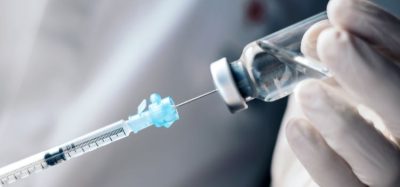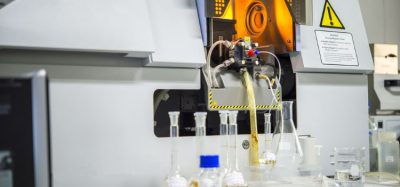Data of rheumatoid arthritis treatment study released
Posted: 14 November 2019 | Rachael Harper (European Pharmaceutical Review) | No comments yet
New data shows the non-inferiority of efficacy for the subcutaneous (SC) formulation of CT-P13 to the intravenous (IV) formulation of CT-P13 in people with rheumatoid arthritis.


The data from a study further investigating the efficacy, pharmacokinetics and safety (including immunogenicity) of CT-P13 SC over a one-year treatment period and after switching from CT-P13 IV to CT-P13 SC in people with rheumatoid arthritis (RA) has been released by Celltrion Healthcare.
A previous study demonstrated the non-inferiority of CT-P13 SC to CT-P13 IV and compared the efficacy, pharmacokinetics and safety profiles of the two treatments in people with rheumatoid arthritis over 30 weeks. People who received full doses of CT-P13 IV 3mg/kg at weeks 0 and 2 were randomly assigned to receive either CT-P13 SC 120mg biweekly (from week 6 to week 28) or CT-P13 IV 3mg/kg every 8 weeks (from week 6 to week 22).
From week 30 all people received CT-P13 SC 120mg biweekly up to week 54.
The efficacy up to week 54 showed a similar trend between CT-P13 SC and CT-P13 IV arms even after switching from IV to SC treatment at week 30.
The results after switching from IV to SC treatment at week 30 were comparable to that of maintaining CT-P13 SC up to week 54 (up to week 64 for safety profile). The proportion of people who had anti-drug antibody (ADA) positive results and had post-treatment ADA positive results were comparable between the two arms and numerically lower in the CT-P13 SC arm.
“Non-inferiority of efficacy for CT-P13 SC to CT-P13 IV was demonstrated by the change from baseline DAS28 (CRP) at week 22. The serum concentration of CT-P13 SC was well maintained up to week 54. Safety results of CT-P13 SC showed similar profiles to CT-P13 IV during the study,” said Professor Rene Westhovens, Rheumatologist at the University Hospitals KU Leuven, Belgium. “Hence, CT-P13 SC showed lower ADA than CT-P13 IV which indicates high trough level potentially leading to better PK pattern and positive efficacy profile. The results show that the novel SC formulation of CT-P13 via pre-filled syringe could provide a favourable benefit to people with an alternative convenient way of administration.”
The results show that the novel SC formulation of CT-P13… could provide a favourable benefit to people with an alternative convenient way of administration”
Data from a CT-P17 study, a recombinant humanised monoclonal antibody developed as a biosimilar to adalimumab, has also been announced. The study was designed to evaluate the safety, including immunogenicity and pharmacokinetics, of CT-P17 (40mg/0.4mL) compared with adalimumab (40mg/0.4mL) in healthy male subjects.
In this Phase I study, healthy male subjects aged 18 to 55 years were randomised to receive 40mg of either CT-P17 or adalimumab by SC injection.
Single SC doses of 40mg of CT-P17 were well-tolerated and the safety profile of CT-P17, including immunogenicity, was comparable with adalimumab in the subjects.
“With the availability of the CT-P13 SC, patients could now be treated with infliximab SC before switching to other costly antibodies with a different mechanism of action such as JAK-inhibitors,” said Mr Hyoung-Ki Kim, Vice Chairman at Celltrion Healthcare. “Celltrion Healthcare will target CT-P13 SC as the preferred agent for second-line treatment in rheumatoid arthritis.
“Together with the subcutaneous formulation of CT-P13, the development of the biosimilar adalimumab, CT-P17, will offer opportunities in improving access to treatment and increasing treatment options worldwide.”
Related topics
Antibodies, Clinical Trials, Data Analysis, Drug Safety, Formulation, Research & Development (R&D)









